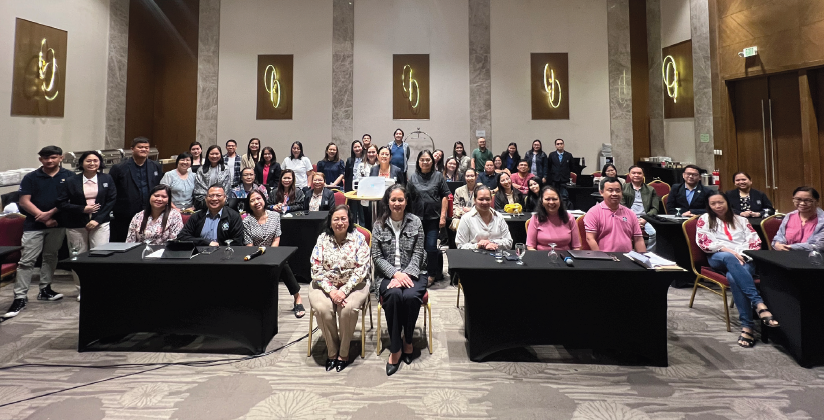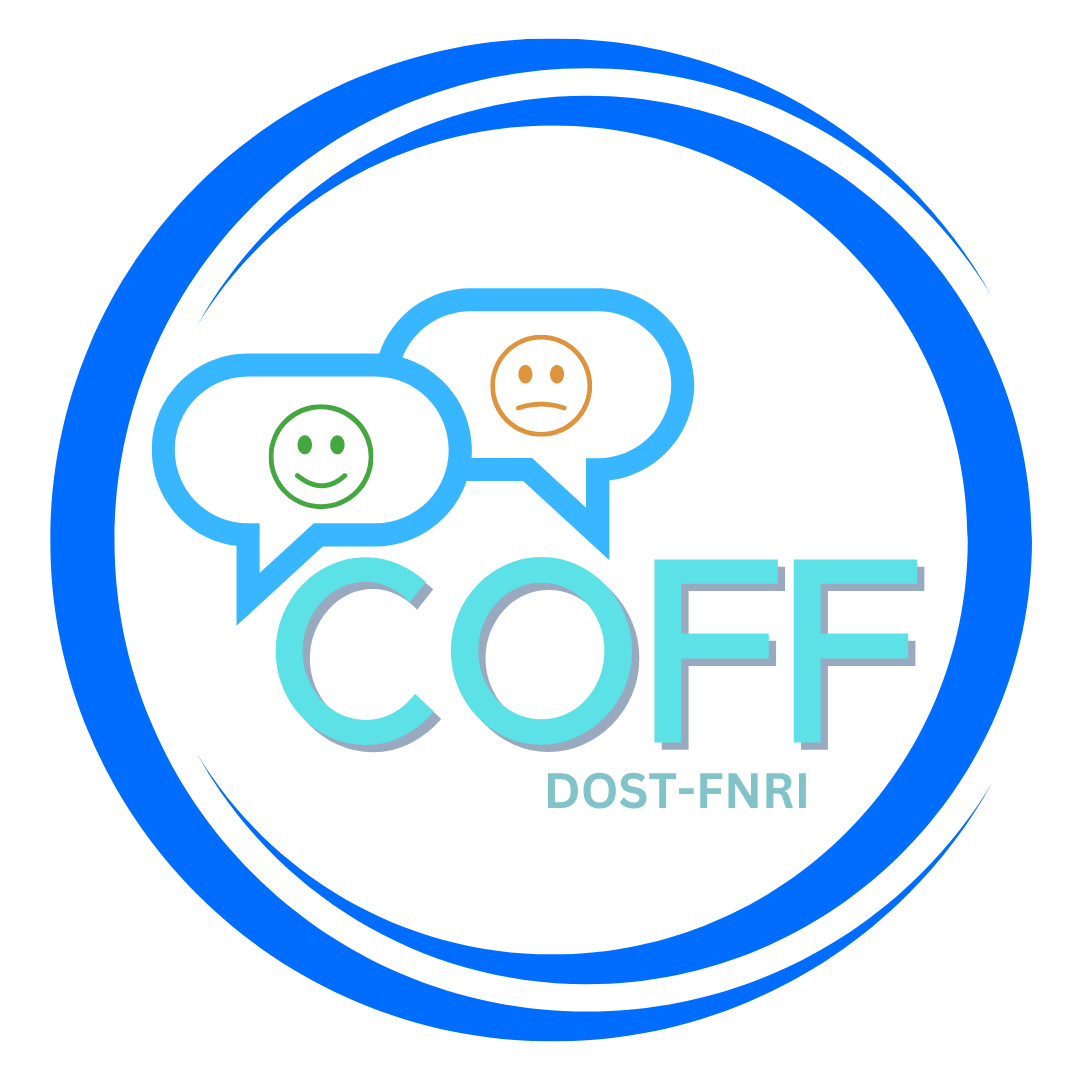 2025 Planning Workshop: “Huddle, Analyze, Build and Innovate: Expanding Concepts and Advancing Progress in Food and Nutrition R&D and S&T”
2025 Planning Workshop: “Huddle, Analyze, Build and Innovate: Expanding Concepts and Advancing Progress in Food and Nutrition R&D and S&T”
In line with the preparation of the DOST-Food and Nutrition Research Institute’s 2025 programs, activities and projects, the Institute conducted its Annual Planning Workshop exercise. It commenced with the holding of the pre-planning workshop on September 25, 2024, at the DOST Executive Lounge and the actual planning workshop on October 21-24, 2024. The workshop was held at the heart of Manila, the Hotel Lucky Chinatown in Binondo.
DOST-FNRI’s Pre-planning Workshop, September 25, 2024
The first part of the pre-planning activity featured a participatory discussion and workshop led by Ms. Riz Angeline D. Mapa, Supervising Economic Development Specialist from the Innovation Community and Partnerships Division from Innovation Staff, National Economic Development Authority (NEDA). She covered the topics of Huddle, Analyze, Build and Innovate (HABI) design thinking, futures thinking exercises, and prioritization and target-setting. Ms. Mapa emphasized the importance of Design Thinking and the HABI process in fostering innovation in the Philippines in general and the DOST-FNRI in particular. By adopting a human-centered approach, the Design Thinking framework encourages collaboration and creativity which is essential for addressing the nation’s challenges. The integration of the Filipinnovation mindset, which values empathy, critical thinking, collaboration, creativity, and imagination, is crucial for driving inclusive development and achieving a resilient and secure future for all Filipinos.
The insights shared highlight the necessity of a collective effort in innovation, as no single entity possesses all the solutions. The emphasis on convergence and collaboration among various stakeholders reflects a progressive approach to problem-solving. The activities designed to engage participants in identifying signals and drivers of change, foster a proactive mindset, thus preparing them to navigate the complexities of future scenarios. This participatory approach not only enhances creativity but also builds a sense of ownership and commitment to the innovation process.
To further enhance the impact of the Design Thinking, Ms. Mapa recommended that organizations and government institutions prioritize the establishment of platforms for continuous collaboration among diverse stakeholders. Regular workshops and training sessions should be conducted to cultivate the Filipinnovation mindset across all sectors. Additionally, leveraging the Futures Wheel tool can aid in strategic planning, allowing teams to visualize potential consequences of their decisions and adapt accordingly. By fostering a culture of innovation, that is inclusive and responsive to the needs of the community, the Philippines can effectively navigate its path towards a resilient and prosperous future.
The second part of the pre-planning involved sharing insights and perspectives from two distinguished DOST-FNRI officials, Dr. Aida R. Aguinaldo, former Deputy Director, and Dr. Cecilia Cristina S. Acuin, former Division Chief of NAMD regarding the role DOST-FNRI should assume over the next five years.
Dr. Aguinaldo highlighted the significant progress made by the DOST-FNRI in enhancing research and development, community engagement, and funding over the past five years. The emphasis on quality infrastructure, international standards compliance, and targeted R&D initiatives reflected the Institute’s commitment to improving food and nutrition for the Filipino population, particularly the marginalized communities. Additionally, the call for proactive measures in addressing food consumption patterns and nutritional issues indicates a forward-thinking approach that prioritizes public health.
From the lens of a development partner, Dr. Acuin emphasized the importance of a multisectoral approach to tackle nutrition challenges in the Philippines. By prioritizing collaboration across various sectors and focusing on marginalized groups, effective solutions can be developed to address issues such as stunting and non-communicable diseases. The outlined steps in project conceptualization highlight the necessity of thorough situational analysis, resource assessment, and strategic partnerships to ensure that interventions are both impactful and cost-effective.
Dr. Acuin further stressed that addressing nutritional problems requires a comprehensive strategy that not only considers immediate needs but also long-term sustainability. The emphasis on data utilization and monitoring will enhance the effectiveness of interventions, ensuring they align with national goals. Furthermore, the suggestion for DOST-FNRI to delve into nutrigenomics and advanced data analysis signifies a forward-thinking approach that could yield deeper insights into nutrition-related issues. Overall, these strategies present a robust framework for improving the nutritional landscape in the Philippines.
Planning Workshop, October 21-24, 2024
The four-day actual planning workshop focused on the detailed presentation of the 2025 programs and projects of the technical and administrative divisions or groups namely: 1) Nutrition and Food R&D Division, 2) Nutrition Assessment and Monitoring Division, 3) Technology Diffusion and S&T Services Division, 4) Service Laboratory Group, 5) Office of the Director, and 5) Finance and Administrative Division.
Most of the projects were technically approved in concept with suggestions for improvement. Project objectives may need to be reviewed vis-à-vis committed project outputs and inter-division activities need to be synchronized for proper scheduling. Others will be subjected for further review by the DOST-FNRI Technical Committee such as the major programs like the Updating of Nutritional Status of Filipino Children and other Population Groups.
In light of limited resources, budget requests for most of the projects need to be re-examined and decided upon by the DOST-FNRI Management with due consideration on the declared impact and quality of the projects being proposed. The need to check for possible duplication is also another consideration in approving the proposed projects. The staff complement and carrying capacity of the project team are also a matter of concern in the decision to shift from Institutional Contract of Service (ICOS) to COS. Agreements on the current projects as well as on the regular operations, e.g. maintenance of the laboratories, were also noted to be addressed to ensure smooth project implementation and completion. Continued digitalization of services is encouraged to be implemented for efficient service delivery.
The 2024 accomplishment and 2025 plans of the Occupational Safety and Health (OSH) Program and the Gender Focal Point System (GFPS) were also presented by the committee’s chair and Chief SRS of NAMD, Ms. Chairmaine A. Duante. The OSH Program aims to safeguard the employee’s social, economic, physical and mental well-being in compliance with Republic Act (RA) 11058: An Act Strengthening Compliance with Occupational Safety and Health Standards and Providing Penalties for Violations Thereof. The GFPS, on the other hand, is established in response to Republic Act (RA) 9710 also known as the Magna Carta of Women, the goal of which is to ensure gender mainstreaming in the government and its agencies, and local government units. It is intended to promote gender equality and women’s empowerment. The need to allocate budget for the implementation of the plans of both committees needs to be considered by the DOST-FNRI Management to comply with the government issuances in this regard.
The annual DOST-FNRI Planning Workshop exercise reinforced the importance of strategic thinking and collaboration among the divisions and reinsured the Institute’s focus on its goals in the next five years to achieve the DOST-FNRI’s mission to fight malnutrition with accurate data, correct information and innovative technologies.











